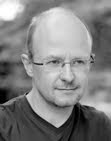Tangled Banks
I'm reading Rebecca Solnit's "Storming the Gates of Paradise - Landscapes for Politics", a collection of 40 essays with an activist perspective on place, space, land and landscape.
In "Tangled Banks and Clear-Cut Examples" she explores the parallels between the pinup calendar and the kind of conventional nature photography that fills calendars and coffee table books. She writes: "Both are usually portrayed in a kind of photography that calls attention not to its own status as representation, but to what is represented, and like much such 'realism' wishes to function as a transparent window onto what is supposed to be presented: the real. Yet what one sees through these windows is a vision of perfection from which death, time, decay, action have been excluded as flaws. Both are souped-up, sleek, flawless, passive; in both the orthodoxy of beauty has produced a curious homogeneity of visual reference to pleasures that are not altogether visual. The chaos of thought and action has been replaced with a stale vision of delight ..."
In another online column, she asks "how will we get back what we've lost if we are too busy to notice it's gone missing?" And she goes on: "The four horsemen of my apocalypse are called 'Efficiency', 'Convenience', 'Profitability' and 'Security' ... These marauding horsemen are deployed by technophiles, advertisers and profiteers to assault the nameless pleasures and meanings that knit together our lives and expand our horizons."
These two short quotes summarise what has been going on the last couple of years in photography. Just as the industry and their army of acolytes (reviewers) convinced us 15 years ago that the CD format was in every way superior to the vinyl disc, we are now told that digital images trump film in every way. Well, just as we can now verify with our own ears that the delicate movements of a miniature diamond needle in a plastic groove generate more dynamics and a vastly more truthful and humane aural experience, I am quite sure that in 15 years time connoisseurs will feast on the subtle qualities of emulsion-based images: the naturalness, the honesty, the waywardness, the micro-unpredictability emerging from the irregular crystals in the film.
Some may think that debate of digital vs analogue has been dead and buried, but I think it is not. The debate has to be kept alive because we are, for the sake of convenience, throwing away the baby with the bath water. And indeed, "how will we get back what we have lost if we are too busy to notice it's gone missing?"
It is heartening, therefore, that Jean-Christophe Béchet from the French magazine Réponses Photo (October issue, p. 168) argues for a little pause from the digital rush, a little slowing down in order to take the opportunity to dig up our old stuff and be surprised by the quality of the materials, mechanics and finishing, the clear viewfinder, the pleasure of looking at a nice, luminous chrome.
A few pages further a reader extolls the virtues of having unclassified boxes full of negatives: it's like having an unkempt memory garden in which you can stroll, follow unexpected leads, or decline invitations to explore. Digital files have a chimeric existence. They can never quite enter our lives.
These calls won't, of course, stop the digital tsunami. Digital aficionados will smile at so much vaporous quaintness. But for us, who still are standing with two or at least one feet in the old world, it may strengthen our resolve to hold on to our analogue assets and to keep them alive.



